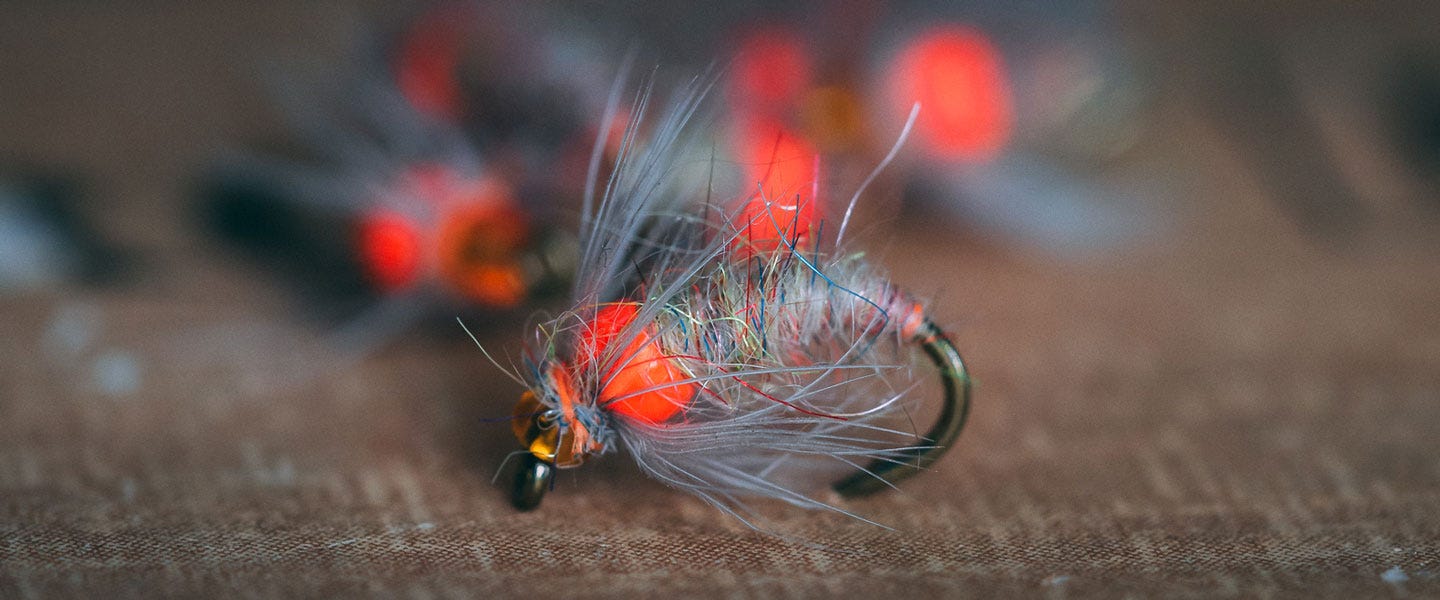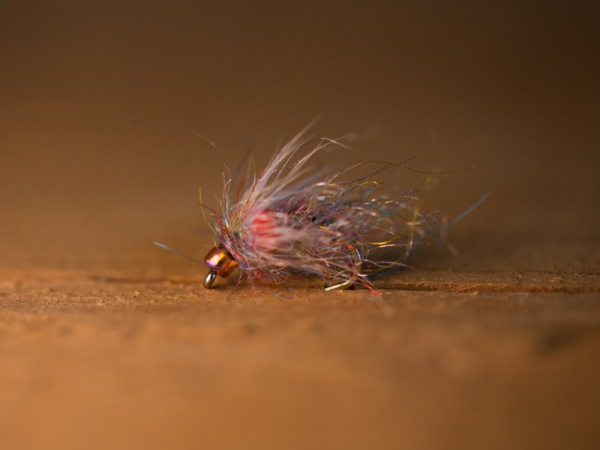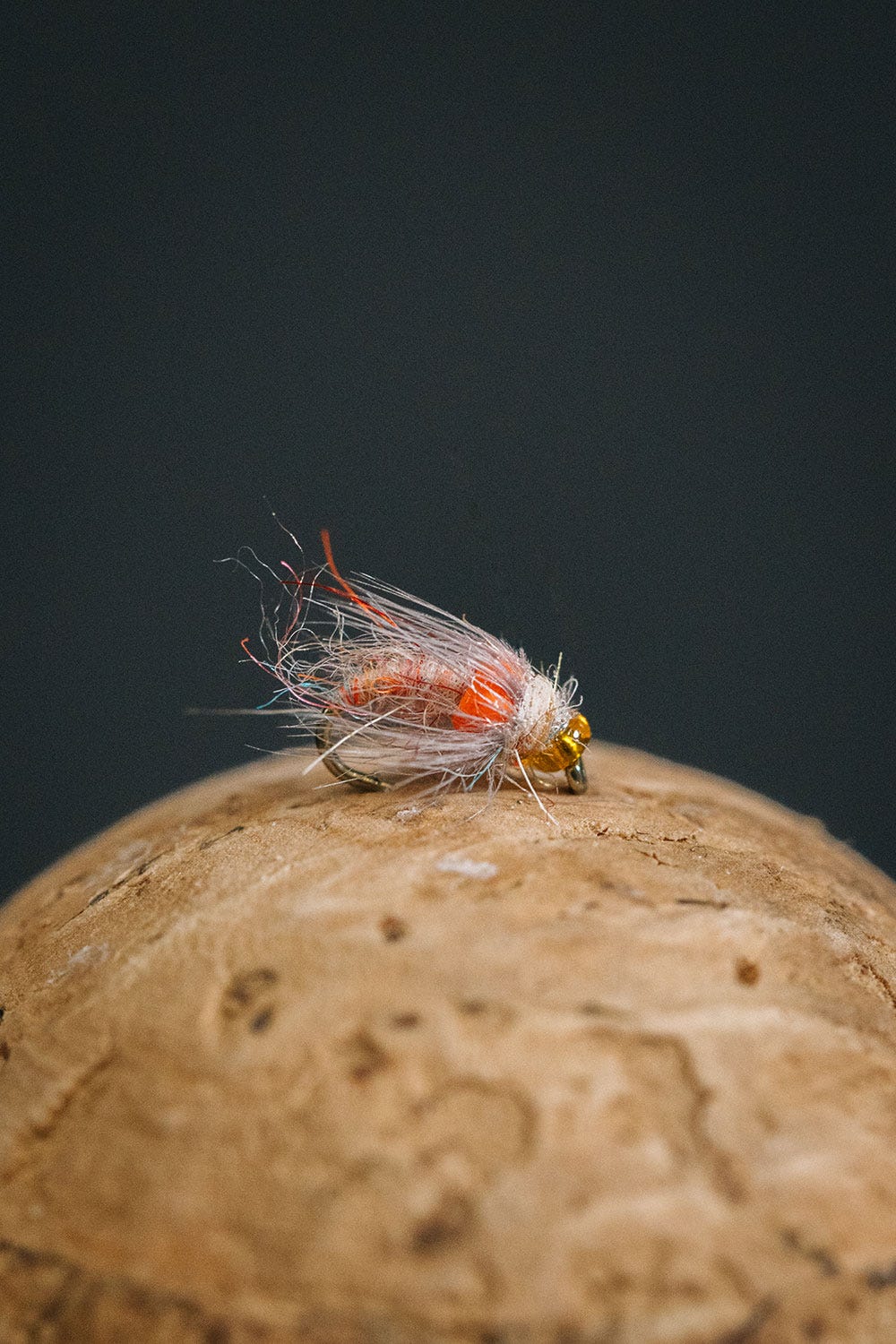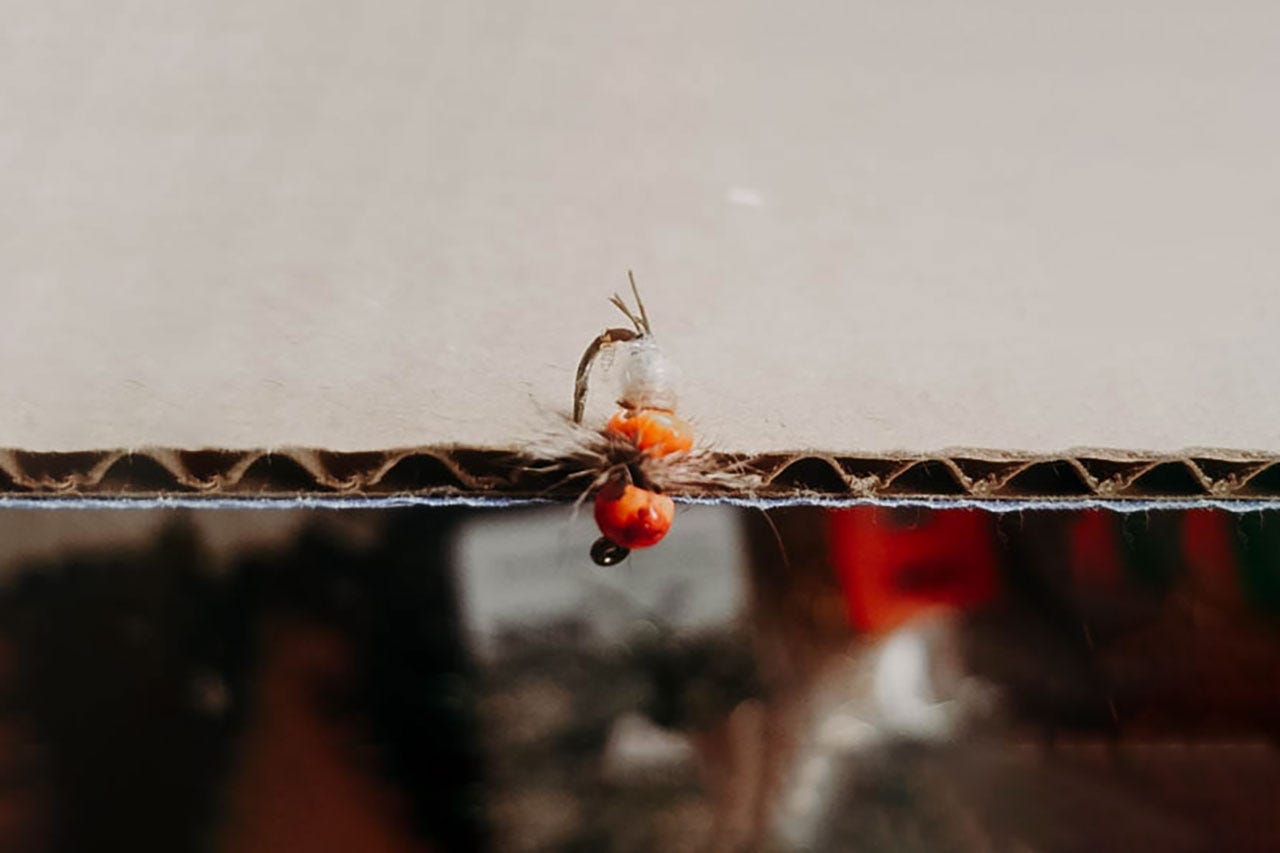The Genesis of the Skurp

We have a slang name for this fly but it’s PG-13 and if you can guess it go ahead and leave you’re comment below (could be interesting), and maybe after reading this it will be even worse. But a while back, Austin, the newest member of the TFP crew showed us a fly he’d been using on the Missouri River here in Montana during one of our fly tying design sessions. He only had one, and it had obviously been used a lot and the dubbing on the back was barely intact. Austin is one of the Missouri anglers who tie’s fish to fish and not to look pretty in the fly shop bins but let me explain this sucker to you because it was interesting.
Many of you remember the hashtag #chokeyourbug that got super popular on Instagram in 2015. This fly, the “OG Skurp” as we must refer to it now included a firebead in the front followed by a grizzly dry fly saddle hackle, followed by the “Bug Collar” in fire orange with Sow Scud dubbing out the back.

We made some slight modifications to the original design that night, and after a few rounds we decided it was interesting and different enough to turn heads when fish have been seeing the same thing over and over again.
Of course, the first question is always, “well does it work?” A quick response back from Fred, Paul myself, and Austin all unanimously agreeing that with 2 fire beads and sow scud dubbing in just about any configuration is going to work on the Missouri River in January. Many variations of firebead flies already exist and all of them work, in fact, I would say that on a warmer day from December to February on the Missouri it might be easier to catch large quantities of fish than any other month nymphing scuds, firebead patterns, lighting bugs, zebra midges, Tailwater Charlie’s or other similar patterns.

So the question really becomes, “Is it better?”
Frankly, maybe before thinking so deeply about this I would have said, “Not really, it’s another firebead fly that works in the winter and early spring.” However, I think the question can be summed up to say that “it is better” to have multiple options in every category when you are fishing highly pressured water or water that fish see a lot of fly patterns on.
That next weekend a crew of us went to be sure our hypothesis on the pattern was justified. Nathan, one of The Fly Project’s design team members was swinging flies up on top of the run. I had been nymph fishing down below him and left the run for a few others to have some space, and when I reached Nathan at the top of the run the first words out of his mouth were, “Did I just watch you land 4 fish already?” I had been fishing a Skurp as my top fly with a Tailwater Charlie below it and 3 of the 4 fish had eaten the Skurp.
We have a slang name for this fly but it’s PG-13 and if you can guess it go ahead and leave you’re comment below (could be interesting), and maybe after reading this it will be even worse.
But a while back, Austin, the newest member of the TFP crew showed us a fly he’d been using on the Missouri River here in Montana during one of our fly tying design sessions. He only had one, and it had obviously been used a lot and the dubbing on the back was barely intact. Austin is one of the Missouri anglers who tie’s fish to fish and not to look pretty in the fly shop bins but let me explain this sucker to you because it was interesting.
Many of you remember the hashtag #chokeyourbug that got super popular on Instagram in 2015. This fly, the The Skurp as we must refer to it now included a firebead in the front followed by a grizzly dry fly saddle hackle, followed by the “Bug Collar” in fire orange with Sow Scud dubbing out the back.
We made some slight modifications to the original design that night, and after a few rounds we decided it was interesting and different enough to turn heads when fish have been seeing the same thing over and over again.
Of course, the first question is always, “well does it work?” A quick response back from Fred, Paul myself, and Austin all unanimously agreeing that with 2 fire beads and sow scud dubbing in just about any configuration is going to work on the Missouri River in January. Many variations of firebead flies already exist and all of them work, in fact, I would say that on a warmer day from December to February on the Missouri it might be easier to catch large quantities of fish than any other month nymphing scuds, firebead patterns, lighting bugs, zebra midges, Tailwater Charlie’s or other similar patterns.


So the question really becomes, “Is it better?”
Frankly, maybe before thinking so deeply about this I would have said, “Not really, it’s another firebead fly that works in the winter and early spring.” However, I think the question can be summed up to say that “it is better” to have multiple options in every category when you are fishing highly pressured water or water that fish see a lot of fly patterns on.
That next weekend a crew of us went to be sure our hypothesis on the pattern was justified. Nathan, one of The Fly Project’s design team members was swinging flies up on top of the run. I had been nymph fishing down below him and left the run for a few others to have some space, and when I reached Nathan at the top of the run the first words out of his mouth were, “Did I just watch you land 4 fish already?” I had been fishing a Skurp as my top fly with a Tailwater Charlie below it and 3 of the 4 fish had eaten the Skurp.

